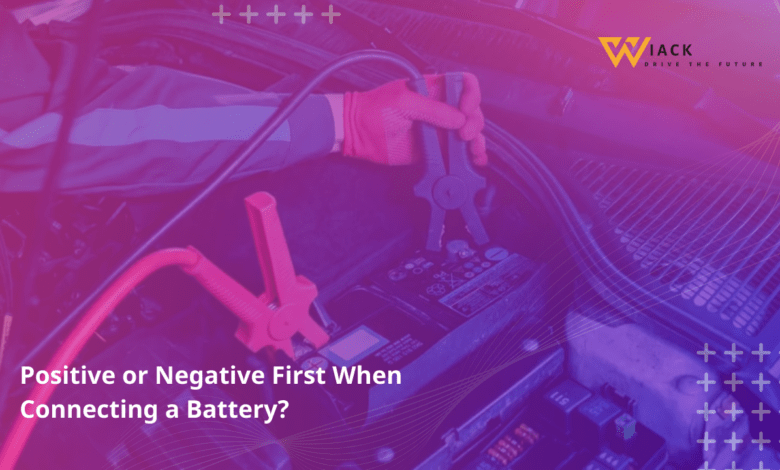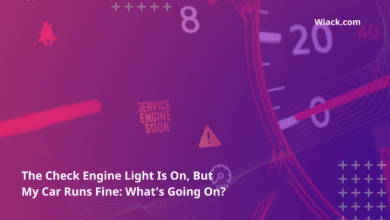Positive or Negative First When Connecting a Battery?

Did you know that over 40% of vehicle breakdowns are caused by battery issues? This staggering statistic highlights the importance of proper battery maintenance and connection. Whether you’re a seasoned mechanic or a DIY enthusiast, understanding the correct order for connecting a car battery is crucial for your safety and the health of your vehicle. In this comprehensive guide, we’ll explore the age-old question: positive or negative first when connecting a battery?
Understanding the Importance of Order
When it comes to connecting a car battery, the order in which you attach the terminals is not just a matter of preference—it’s a critical safety measure. Many people underestimate the significance of this process, but following the correct procedure can prevent accidents and protect your vehicle’s electrical system.
Why Connecting Order Matters
The reason for connecting the positive terminal first lies in the fundamental principles of electricity and the design of modern vehicles. Your car’s electrical system is designed with the negative terminal connected to the vehicle’s chassis, creating what’s known as a “ground.” This setup means that the entire metal body of your car is essentially part of the electrical circuit.
When you connect the battery, you’re completing this circuit. If you connect the negative terminal first, you’re creating a situation where any accidental contact between the positive cable and any metal part of the car could cause a short circuit. This is because the negative terminal is already connected to the car’s body through the ground connection.
On the other hand, connecting the positive terminal first eliminates this risk. Even if the positive cable accidentally touches the car’s body, no circuit is completed because the negative terminal isn’t connected yet. This simple order of operations significantly reduces the risk of electrical accidents.
Dangers of Connecting the Negative Terminal First
Connecting the negative terminal first may seem harmless, but it can lead to several dangerous situations. Let’s explore these risks in detail:
Potential for Sparks and Arcing
When you connect the negative terminal first, you create a scenario where the entire car body becomes electrically “hot.” If the positive cable then touches any metal part of the vehicle, it can cause sparking or arcing. These sparks aren’t just alarming—they can be dangerous.
Sparks near a battery can ignite hydrogen gas that batteries naturally emit, potentially causing an explosion. While modern batteries are designed to minimize this risk, it’s still a possibility, especially with older or damaged batteries.
Risk of Electrocution
Another significant danger is the risk of electrocution. Car batteries typically produce 12 volts, which isn’t enough to cause serious harm under normal circumstances. However, the amperage (current) that a car battery can deliver is extremely high. This high current can cause severe burns or even cardiac arrest if it passes through your body.
By connecting the negative terminal first, you increase the risk of accidentally completing a circuit through your body if you touch a metal part of the car while holding the positive cable. While this scenario is unlikely if you’re careful, it’s an unnecessary risk that’s easily avoided by connecting the positive terminal first.
Fire Hazard
In extreme cases, incorrect battery connection can lead to fires. If a short circuit occurs due to improper connection order, it can cause wires to overheat rapidly. This overheating can melt wire insulation and potentially ignite nearby flammable materials in the engine compartment.
While rare, such fires can be devastating, potentially leading to total vehicle loss and putting personal safety at risk. By following the correct connection order, you significantly reduce the chance of such catastrophic events occurring.
The Correct Procedure: Positive First
Now that we understand why the order matters, let’s dive into the correct procedure for connecting a car battery. Remember, the golden rule is: positive first, negative last.
Connecting the Battery
Follow these steps to safely connect your car battery:
Step 1: Connect the Positive Terminal
- Locate the positive terminal on your battery. It’s usually marked with a plus (+) sign and often has a red cover.
- Take the positive (red) cable and carefully connect it to the positive terminal.
- Ensure the connection is tight and secure, but be careful not to overtighten.
Step 2: Connect the Negative Terminal
- After the positive terminal is securely connected, move to the negative terminal. It’s typically marked with a minus (-) sign and may have a black cover.
- Take the negative (black) cable and connect it to the negative terminal.
- Again, ensure a tight and secure connection without overtightening.
By following this order, you minimize the risk of short circuits and ensure a safe connection process.
Disconnecting the Battery
When it comes time to disconnect your battery, perhaps for replacement or maintenance, the order is reversed. This is another crucial safety measure that many overlook.
The Reverse Order: Negative First
When disconnecting a battery, always remember: negative first, positive last. Here’s why and how:
Step 1: Disconnect the Negative Terminal
- Locate the negative terminal (marked with a minus sign or black).
- Using the appropriate wrench or pliers, loosen the nut or bolt securing the negative cable.
- Carefully remove the negative cable from the terminal and move it away from the battery.
Step 2: Disconnect the Positive Terminal
- After the negative cable is safely removed, move to the positive terminal.
- Loosen the nut or bolt securing the positive cable.
- Remove the positive cable from the terminal.
By disconnecting the negative terminal first, you break the ground connection. This means that even if the positive cable accidentally touches a metal part of the car during removal, there’s no complete circuit to cause a short.
Common Mistakes and Misconceptions
Despite the importance of correct battery connection procedures, many misconceptions persist. Let’s address some common mistakes to help you avoid potential pitfalls:
Connecting the Negative Terminal First
As we’ve discussed, this is perhaps the most dangerous mistake you can make when connecting a battery. Some people mistakenly believe it doesn’t matter which terminal you connect first, but as we’ve seen, connecting the negative terminal first creates unnecessary risks.
Disconnecting the Positive Terminal First
When removing a battery, some people instinctively disconnect the positive terminal first. This is incorrect and potentially dangerous. Remember, when disconnecting, it’s always negative first, then positive.
Other common misconceptions include:
- Thinking that the order doesn’t matter for smaller batteries (it always matters)
- Believing that modern cars are immune to connection order issues (they’re not)
- Assuming that quick connections or disconnections are safe if you’re “careful” (speed increases risk)
By understanding these misconceptions, you can avoid common pitfalls and ensure safer battery handling.
Additional Tips for Battery Handling
While knowing the correct order for connecting and disconnecting batteries is crucial, there are several other safety measures you should keep in mind when working with car batteries:
Use Insulated Tools
When working with batteries, always use tools with insulated handles. This provides an extra layer of protection against electrical shock. Specialized battery wrenches and pliers are available and highly recommended for this type of work.
Avoid Contact with Metal Surfaces
Be mindful of your surroundings when working on batteries. Avoid wearing metal jewelry like watches or rings, which could accidentally create a connection. Also, be careful not to let your tools touch both terminals simultaneously or bridge between a terminal and any metal part of the vehicle.
Wear Safety Glasses
Battery acid is highly corrosive, and even sealed batteries can potentially leak or spray if damaged. Always wear safety glasses to protect your eyes when working with batteries. It’s a simple precaution that can prevent serious injury.
Disconnect the Battery Before Working on Electrical Components
If you’re planning to work on your car’s electrical system, always disconnect the battery first. This prevents accidental short circuits and protects both you and your vehicle’s sensitive electronics.
Conclusion: Safety First
In the world of automotive maintenance, few tasks are as simple yet as crucial as properly connecting a car battery. The rule of thumb—positive first when connecting, negative first when disconnecting—is more than just a guideline; it’s a vital safety measure that protects you and your vehicle.
Always Follow the Recommended Procedure
Consistency is key when it comes to battery safety. Make it a habit to always follow the correct procedure, even if you’re in a hurry or think you can get away with a shortcut. The few extra seconds it takes to do things right could save you from costly repairs or dangerous accidents.
Consult a Mechanic if Unsure
If you’re ever in doubt about how to handle your car’s battery or any other automotive maintenance task, don’t hesitate to consult a professional mechanic. Their expertise can provide peace of mind and ensure that your vehicle remains in top condition.
Remember the Positive-First, Negative-First Rule
As a final reminder, always connect the positive terminal first and disconnect the negative terminal first. This simple rule, when followed consistently, will help keep you safe and your car running smoothly.
By understanding the importance of proper battery connection and following these guidelines, you’re not just maintaining your vehicle—you’re prioritizing safety for yourself and others. Whether you’re a seasoned DIY enthusiast or a novice car owner, these principles of battery safety are essential knowledge for anyone who might find themselves under the hood.
Remember, when it comes to car batteries, the order of operations isn’t just a preference—it’s a critical safety measure. By following these guidelines and staying informed about proper automotive maintenance, you’re taking an important step in ensuring your safety and the longevity of your vehicle. So the next time someone asks you, “Positive or negative first when connecting a battery?” you’ll know the answer and, more importantly, understand why it matters.
Get the latest car news, reviews, and prices at Wiack.com. Your one-stop destination for all things automotive.





